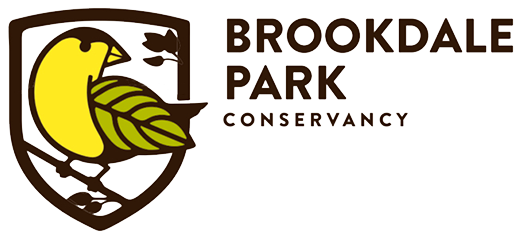Canopy tree replenishment program
Northern Red Oak
Quercus rubra
New Jersey’s state tree, red oaks have straight trunks clear of branches leading to a rounded crown and a canopy that is usually 3/4 as wide as the height. Its leaves turn crimson, golden orange and russet in the fall. Its wood outsells all other hardwoods and is used for multiple purposes. Hosts: over 500 species of butterflies, larval host to Grey Hairstreak Attracts: birds, small mammals and deer Growth: 75-100’h, moist to dry well drained loamy soil, shade tolerant Location: Next to circuit drive as you enter/leave via Bellevue
Scarlet Oak
Quercus Coccinea
Scarlet oaks are known for their brilliantly colored fall foliage. The branches are thick and ascending; twigs are are smooth and reddish brown. It forms a rounded crown that is somewhat pyramidal. The bark is very thin with fine fissures and scaly ridges. Plant it where there is sufficient space for it to grow upward and spread. Hosts: over 500 species of butterflies Attracts: birds, small mammals and deer Growth: 75’h, dry well drained soil, full sun Location: Next to circuit drive as you enter/leave via Bellevue
Pin Oak
Quercus palustris
These oaks are easy to identify by a pyramidal shape, with a tall straight trunk and slender branches which angle downward on the lower third of the tree. It has a graceful slender appearance. They are named pin oaks because of their very slender angular pin-like twigs. Glossy dark green leaves become deep red in the fall. In my view, in the winter its architecture is a stand out. Hosts: over 500 species of butterflies, larval host to Grey Hairstreak Attracts: birds, butterflies, hummingbirds Growth: 60-70’ h, heavy, poorly drained soils, sun Location: Next to circuit drive as you enter/leave via Bellevue
Swamp White Oak
Quercus bicolor
Swamp White Oak Quercus bicolor
Swamp White Oaks are natives and have attractive peeling bark which is especially apparent on young trees. The leaves are dark green on top with a silvery underside, and the acorns are distinguished by their long stalks. Every 3 to 5 years they produce large “mast” crops of acorns, this reduces seed predation and improves reproduction. This is a “keystone tree” as it supports many types of wildlife from insects to butterflies to birds and mammals.
Hosts: over 500 different species of butterflies/moths
Growth: 50-60’ h, moist to wet acidic soil, adapts to dry site
Location: Next to Circuit Dr between triangle and dog park
Yellowwood
Cledratis Kenukea
Yellowwood Cledratis Kenukea
This native tree, part of the pea family produces fragrant flowers in June followed by seedpods that resemble pea pods. Yellowwoods provide nesting sites for songbirds as well as high quality nectar and pollen that attracts bees/pollinators. The wood of this tree is indeed yellow and the root bark was used in the past to produce yellow dye.
Attracts: bees and other pollinators
Growth: 30-50’ h, moist soil, protect from wind
Location: Between Pollinator Garden and Band Stand
Princeton Elm
Ulmus americana ‘Princeton’
Princeton Elm Ulmus americana ‘Princeton'
This is a native rough barked tree with small flowers in the spring and winged seeds that mature in April/May as the leaves reach full size. The leaves are 6” long, elliptical, dark green with toothy edges, and turn yellow in the fall. This graceful vase-shaped tree was widely used as a street tree until the population was decimated by Dutch Elm disease. The Princeton Elm variety was developed in 1922 and shows excellent resistance to the disease.
Hosts: over 200 different butterflies/moths
Growth: 60-80’ h, wet, dry or city condition tolerant
Location: Next to circuit dr between triangle and dog park
Yellow Birch
Betula alleghaniensis
Yellow Birch. Betula alleghaniensis
Yellow Birches grow naturally in US forests at high to medium elevations. This slow growing tree lives about 150 years. Tiny flowers appear in early spring in separate male and female catkins on the same tree. Drooping cone-like fruits mature in late summer and contain winged seeds. The oval serrated leaves turn yellow in the fall and like most birches, the bark peels.
Hosts: over 350 different butterflies/moths
Growth: 70-80’ h, average soil, sensitive to heat/drought
Location: Bottom of Rose Garden lawn
Hackberry
Celtis occidentalis
Common Hackberry, Celtis occidentalis
Hackberry features leaves shaped like spear heads that are 2 to 4 inches long. This native tree produces small red berry-like fruits that turn dark purple and persist into winter. As a rich food source it may need extra protection from deer and mammals who may damage it while browsing. These trees mature rapidly and can live 150 to 200 years, growing into a rounded shape.
Feeds: flickers, cardinals, waxwings, robins, thrashers
Hosts: over 40 types of butterflies/moths
Growth: 40-80’ h, most soil types, temperatures and rainfall
Location: Between playground and stream-side garden
Black Tupelo
Nyssa sylvatica
Black Tupelo , Nyssa sylvatica
Black Tupelo is often grown for its foliage, a deep, glossy green in spring/summer, it erupts in fall becoming a mix of purple, scarlet, orange and yellow - sometimes all on one branch. In spring, small, greenish-white flowers are an excellent nectar source for bees. The small sour fruits mature to a dark blue color which inspires its common name Black Tupelo. This is a native tree.
Hosts: 35 different butterflies/moths, visited by bees
Growth: 30-50’ h, average soil and water needs
Location: Between playground and stream side garden









